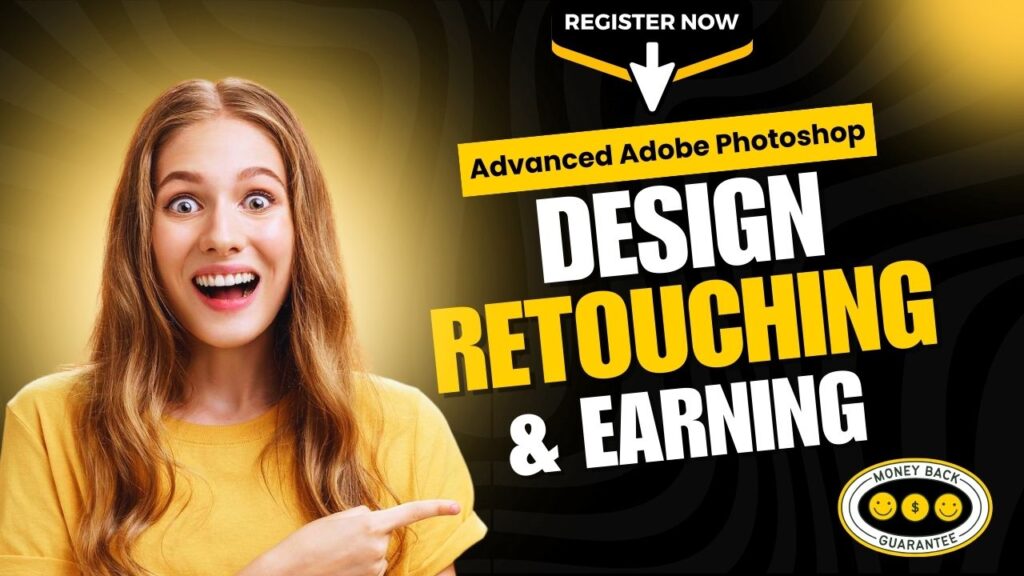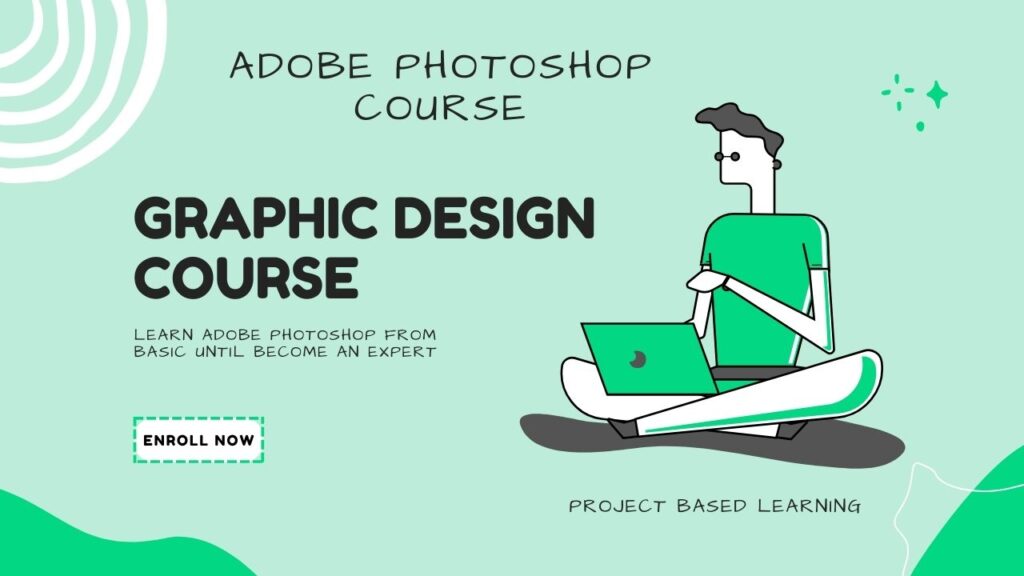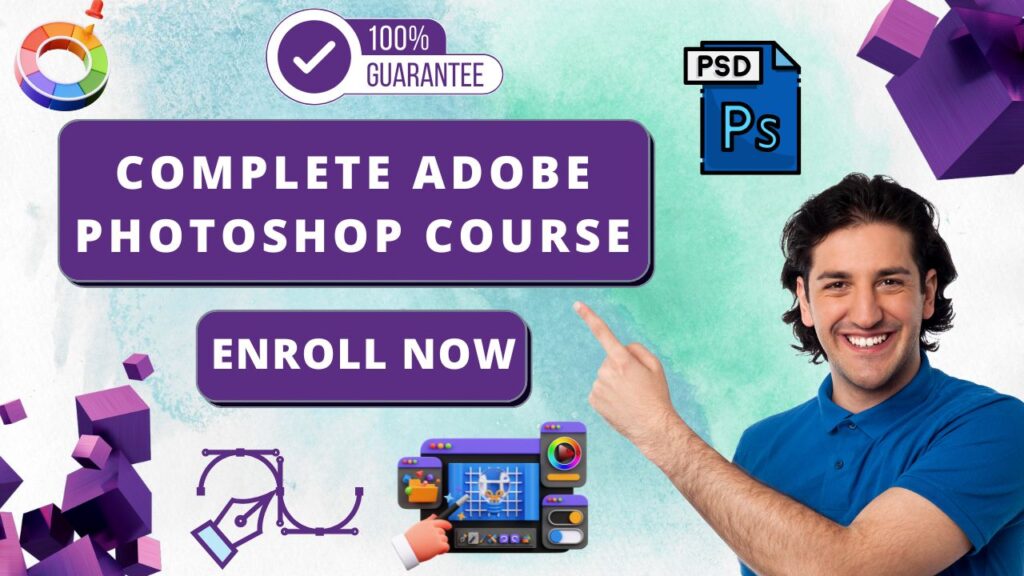Graphic design is everywhere. Learn the Fundamentals Of Graphic Design by this complete guide. From the apps you scroll through daily to the packaging of your favourite snacks, every touchpoint involves the skill, creativity, and talent of a graphic designer.
This field combines art, communication, and technology to create visually appealing and meaningful designs. But how do graphic designers master their craft? It all begins with understanding the fundamentals of graphic design.
This guide dives deep into everything you need to know as a design enthusiast, aspiring professional, or industry veteran. Whether you’re a web developer trying to understand aesthetics, a digital marketer keen on impactful visuals, or anyone passionate about design, read on to learn more.


Table of Contents
What is Graphic Design?
Simply put, graphic design is the art of visual communication. It involves creating visuals that convey messages through typography, imagery, colours, and layouts. Graphic designers blend creativity with problem-solving to meet specific goals, like building brand identity or improving user experiences.
Graphic design is everywhere—logos, advertisements, websites, book covers, mobile apps, business cards, and more. It’s about more than just looking good; it’s about communicating effectively and creating value.
History of Graphic Design
Graphic design has a history as rich as art itself. Its origins date back to prehistoric cave paintings, where early humans used visuals to communicate. Over time, it evolved alongside technology and cultural trends.
- The Printing Revolution (15th Century): The invention of the printing press by Johannes Gutenberg made graphic design possible on a larger scale. Typography and layouts started to take form.
- The Arts and Crafts Movement (19th Century): Designers like William Morris introduced aesthetics to mass production, advocating for craftsmanship even in utilitarian designs.
- Modernism (20th Century): The rise of clean, functional design with movements like Bauhaus changed the game, laying the groundwork for contemporary design principles.
- Digital Age (21st Century): The explosion of internet and digital tools like Adobe Photoshop gave birth to unprecedented possibilities in design.
How Adobe Photoshop Empowers Students And Professionals
World’s First Graphic Designers
Who’s the world’s first graphic designer? While the title doesn’t belong to a single individual, here are some pioneers worth highlighting:
- Albrecht Dürer (16th Century): Known for his intricate woodcuts and visual prints, he’s seen as one of the earliest examples of a designer using visuals to engage an audience.
- William Morris (19th Century): His work during the Arts and Crafts Movement introduced the concept of design as both functional and beautiful.
- Saul Bass (20th Century): A legendary name in modern graphic design, Bass created iconic movie posters and logos. His style is timeless and still inspires designers today.
What Are the Fundamentals of Graphic Design?
The core principles that guide every successful graphic design project include the following elements:
| Principle | Definition |
| Typography | The art of arranging text in a visually appealing and readable way. Fonts, spacing, and alignment matter more than you think. |
| Colour Theory | Colours influence how people perceive your design. Choosing the right palette can evoke specific emotions or guide user action. |
| Balance | A well-balanced composition ensures your design feels stable and professional. Balance can be symmetric or asymmetric. |
| Contrast | By mixing colours, textures, and elements, contrast helps create focus and hierarchy, drawing attention to key components. |
| Alignment | Proper alignment creates a sense of order and cohesion in any layout. It ensures everything looks polished. |
| Hierarchy | Visual hierarchy directs the viewer’s eye. Important details, like the headline or call-to-action, should always stand out. |
| White Space | Not everything needs to be filled! The use of white (or negative) space ensures your designs breathe and feel uncluttered. |


Fun Facts About Graphic Design
Here are some fun snippets to break things up!
- The first “graphic design” logo dates back to 2300 BC! It’s a Mesopotamian trademark stamped on pottery.
- While Helvetica is the most widely used font in design history, many designers call it “boring” because of its universality.
- The colour blue is the most used globally in branding because it conveys trust and reliability.
Jobs Related to Graphic Design
Graphic design opens doors to numerous career paths. Popular occupations include:
- Brand Designers who create logo suites and visual identities.
- UI/UX Designers focusing on user interaction and digital experiences.
- Motion Graphics Artists bringing designs to life with animation.
- Art Directors leading creative teams and managing visual storytelling.
Pros of Graphic Design
Wondering why graphic design is such an appealing choice for many? The benefits are undeniable.
- Creative Freedom: Graphic designers get to explore artistry and innovation in every task.
- High Demand: Businesses continually seek talents for marketing campaigns, websites, and branding.
- Work Variety: No two projects are alike, keeping the job stimulating and fun.
- Remote Work Opportunities: Design tools have made freelancing from anywhere extremely accessible.
Cons of Graphic Design
However, graphic design comes with challenges as well.
- Tight Deadlines: Projects often need rapid turnarounds.
- Creative Blocks: Like any artistic field, finding inspiration isn’t always easy.
- Client Feedback: Balancing creative vision with client requests can be tricky!
Fundamentals of Graphic Design for Beginners
Tips to Learn Graphic Design
If I were starting from scratch, here’s exactly what I’d do to learn the fundamentals of graphic design faster and better:
- Use Free Resources: Think YouTube tutorials, beginner-level blogs, and community forums.
- Invest in Premium Courses: Websites like Skillshare or Udemy offer in-depth training.
- Download Free Software: Tools like Canva and Figma are intuitive for beginners.
- Practice Daily: Pick a small project every day—revamping logos, creating banners, etc.
- Learn from Critique: Share your designs, accept feedback, and improve accordingly.
Role of Adobe Photoshop in Graphic Design
Adobe Photoshop is often seen as the Swiss Army Knife for graphic designers. It’s an essential tool that allows users to manipulate images, create illustrations, and craft layouts for everything from social media templates to professional posters. Photoshop’s versatility is unmatched, from layering images to correcting complex photo imperfections.
How to Get Started?
It’s safe to say mastering the fundamentals of graphic design is essential for anyone looking to thrive in the creative industry. Whether you’re experimenting with colour palettes or crafting logos that leave lasting impressions, the world of design is vast and exciting.
Feeling inspired? Start practicing today and turn your passion into a profession. And remember—a great designer never stops learning!


Final Thoughts
Graphic design is more than just an art form—it’s a powerful way to communicate ideas, solve problems, and connect with others. While the path to becoming a skilled designer may take time and dedication, the rewards are well worth the effort.
Whether you choose to work for an agency, build your own freelance business, or simply enjoy design as a creative outlet, there’s room for everyone in this industry. Stay curious, keep practicing, and you’ll find your unique voice as a designer. Remember, every expert was once a beginner, and your design journey starts right here!
FAQs About Graphic Design
What are the best tools for beginners in graphic design?
Adobe Photoshop, Canva, and Figma are excellent options.
Is graphic design a good career?
Absolutely! There’s a high demand for skilled designers, and the job allows for flexibility and creativity.
How can I find clients as a freelancer?
Platforms like Fiverr, Upwork, and Behance are great starting points.
Do I need a degree in graphic design?
Having formal education can help, but an exceptional portfolio often outweighs academic credentials.
The Article You May Like
30 Reasons To Learn Adobe Photoshop Training Courses
Adobe Photoshop vs Adobe Illustrator Explained : Which Is Best for Your Nee
